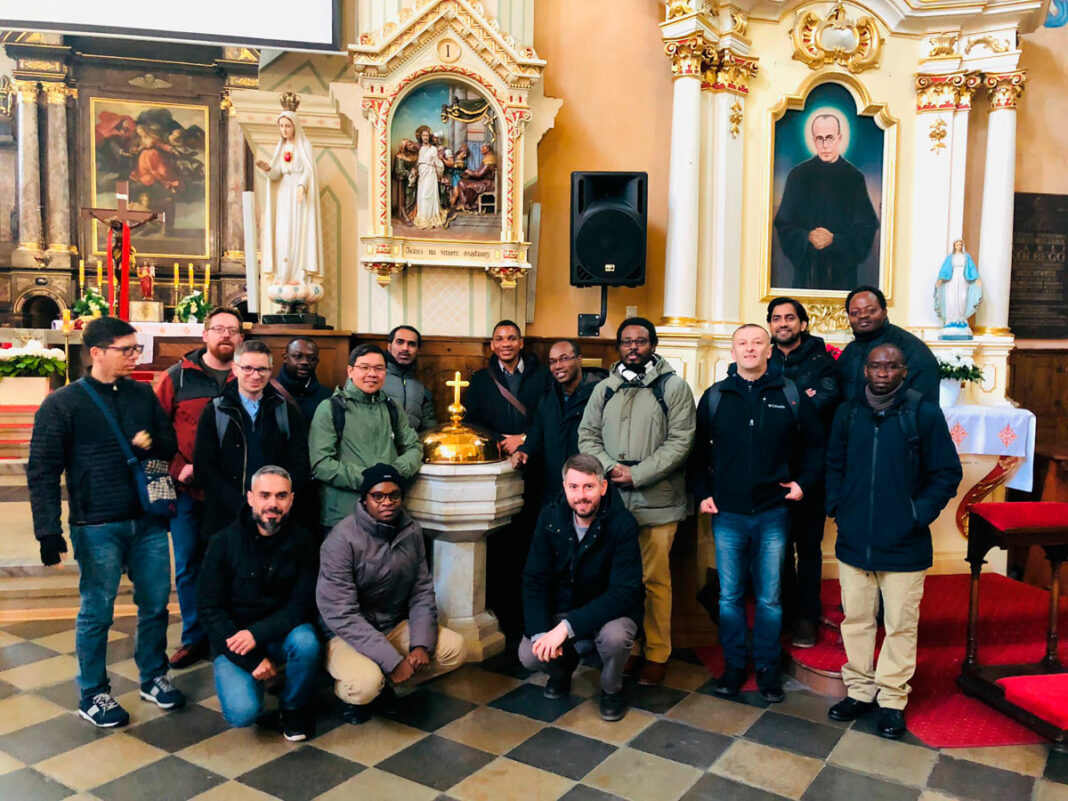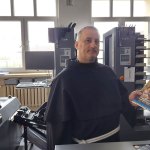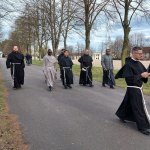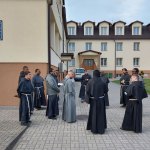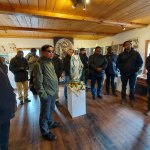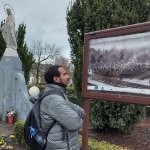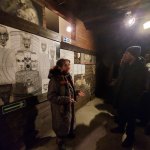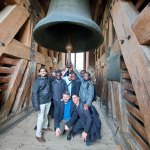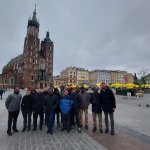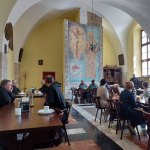From Easter Sunday, April 17 until Divine Mercy Sunday, April 24, 2022, sixteen friars from the Seraphicum International College in Rome went on a pilgrimage to Poland “in the footsteps of St. Maximilian M. Kolbe.”
They stayed in the Province of the Immaculate Mother of God in Poland (Warsaw) and the Province of St. Anthony and Bl. James of Strepar in Poland (Cracow) where they visited many important and inspirational sites, connected with the lives of St. Maximilian, various Franciscan saints, and other saints of Poland. They also learned more about the history and faith of the people of Poland.
For the first three days, the visiting friars were hosted at the friary complex of Niepokalanów, which served as a hub for visiting other sites. After attending Easter Monday Mass with the faithful and other pilgrims at the basilica in Niepokalanów, the visiting friars were given a guided tour of Niepokalanów by the friars who live and work there. They learned more about the legacy of St. Maximilian and all of the significant places in this “City of the Immaculate,” which is spread over 28 hectares [69 acres]. On the second day, the pilgrims went to Zduńska Wola, the birthplace of St. Maximilian. They celebrated Mass in the basilica where the saint was baptized. Next, they visited St. Maximilian’s birthplace and retraced the story his life with the guide. On their return they also took the opportunity to visit the birthplace of Poland’s famous composer, Fryderyk Franciszek CHOPIN, and the museum dedicated to him, located in Żelazowa Wola.
The next day, after celebrating Mass in the wooden chapel that St. Maximilian Kolbe and the friars built and where they prayed daily, the pilgrims visited Warsaw, the capital of Poland. They were led by Friars Adam MĄCZKA and Łukasz JANKOWSKI. First they visited the Museum of the Warsaw Uprising which addressed events that took place during the Second World War. Next, they went on a walking tour of Warsaw and saw that the city was quite modern and developed. This was a concrete sign that, although Warsaw had been completely destroyed during the war, the people of Poland, in their desire for rebirth, overcame this obstacle and rebuilt the whole city in a splendid way, even its historic center. In the afternoon, the friars visited the historic center. Thanks to Friar Adam, they learned the history of the city and its Franciscan presence. The friars visited the church where the first Franciscans settled, as well as the Cathedral where the tomb of Blessed Cardinal WYSZYŃSKI is located and finally the church of the Stigmata of St. Francis, where the friar community has been present since 1646. It also serves as the Provincial Curia for the Province of Warsaw. The Minister Provincial, Friar Grzegorz BARTOSIK, together with his Definitory, generously welcomed the friars and provided them with refreshments and a hearty dinner. The pilgrims also spoke with Friar Lech BACHANEK, who serves in Belarus. Friar Lech explained the current status of our friaries in that area, where St. Maximilian also worked at the beginning of his ministry.
On Thursday, April 21, the pilgrims departed for Cracow. On the way, they stopped at Jasna Góra, the Polish National Marian Shrine of Częstochowa, where they celebrated Mass on the altar before the image of Our Lady. After lunch, they visited Harmęże, a town near Auschwitz. The St. Maximilian Center is located there, along with a Conventual Franciscan friary and a convent belonging to the Father Kolbe Missionary Sisters of the Immaculata. In recent months, the friars and sisters have been hosting many refugees from Ukraine. Despite this, they were still able to provide fraternal accommodations for the pilgrims. Sister Anna MATERA guided the friars through an exhibition entitled “Images of Memory – The Labyrinth,” created by Marian KOŁODZIEJ, a surviving witness of Auschwitz. It is an invaluable collection of drawings that express his experience in the concentration camps. Visitors are often left speechless, because the images show, in a graphic and explicit way, the evil, pain and injustice that Mr. KOŁODZIEJ experienced as a prisoner. The exhibition also speaks to the hope one finds in St. Maximilian, a bright star who bore witness to life in the midst of the darkness of death.
The following day the friars visited Auschwitz and Birkenau, places of commemoration. The friars were guided by an official guide from Poland, who taught them about the cruel and inhuman story of the concentration camps. The friars were left pondering questions and experiencing feelings of pain, restlessness, anger and shame. However, they also felt faith and joy at seeing the Easter candle in the cell in which Maximilian Kolbe, in a gesture of true love, gave his life freely, as Christ did.
This intense experience stayed with the pilgrims as they returned to Harmęże, where they celebrated Mass at the friary church that houses an image of the Immaculate Conception, the same image that St. Maximilian often prayed before. After Harmęże, the pilgrims continued on to Cracow, where, for two days, they stayed at the historic St. Francis of Assisi Friary. They first toured the church and the adjoining friary, which testify to the long and significant presence of the friars in Cracow. Then, Friar Adam, a native of the Province, led the friars through the historic streets of Cracow where they visited many squares, parks, palaces and churches, as well as a cathedral and a castle. The excellent preservation of these sites helped the friars learn more about the local history.
On the eve of the Solemnity of Divine Mercy, the pilgrims celebrated Mass at the shrine of the same name, located in Łagiewniki. Immediately afterwards, they visited the nearby Shrine of Pope St. John Paul II. On the last day of their stay in Poland, the pilgrims celebrated Mass with the clerical students and the faithful. Finally, during lunch, they met with Friar Marian GOŁĄB, the Minister Provincial of Cracow, and the friars of the community that hosted them.
It was a valuable week. These friars from the Seraphicum, representing different continents and nations, were able to visit inspirational sites connected with the life of St. Maximilian, and pray for his intercession. In short, they felt at home, thanks to the generous hospitality of their confreres in Poland. They learned a lot, observing the friars’ apostolate and the way they accommodate of refugees from Ukraine. They learned about the painful but glorious history of Poland, the devotion of the Polish people to St. Maximilian Kolbe and St. Pope John Paul II, and much more.
Perhaps these photographs will be worth more than a thousand words.
Friars Marcos Alejandro QUESADA NAVARRO and Zvonimir PERVAN






